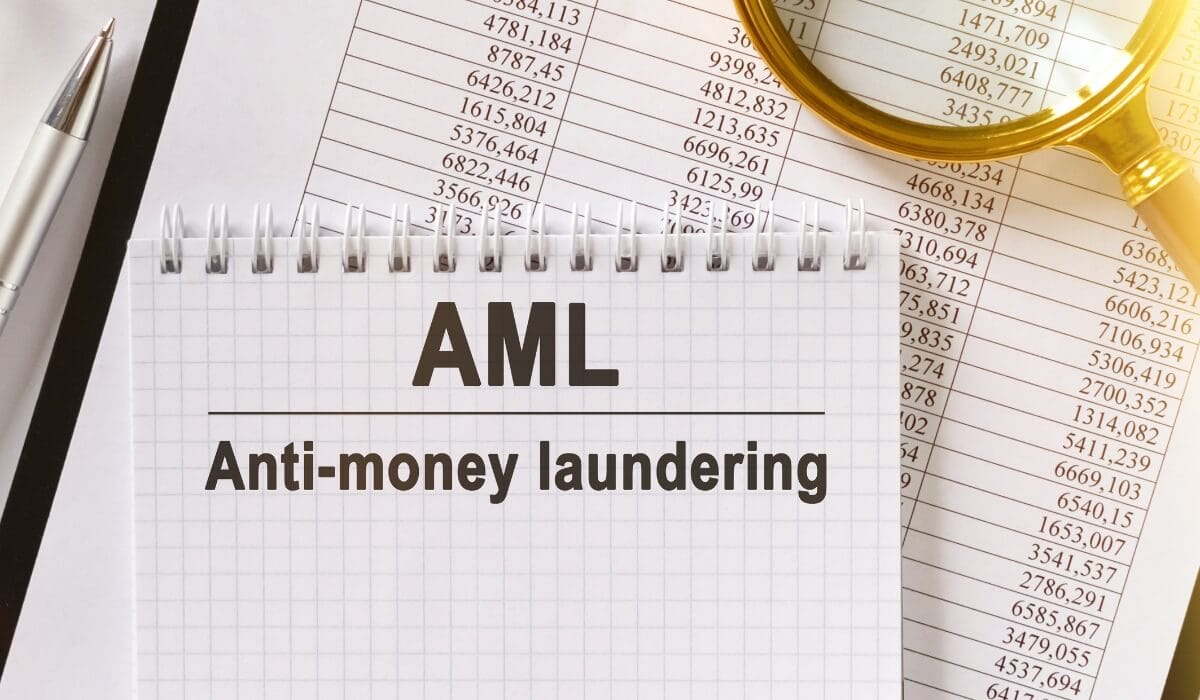Anti-Money Laundering in Cryptocurrency
Explore how crypto combats money laundering through blockchain regulations, cryptocurrency compliance tools, and AML challenges.

Cryptocurrency has become one of the most passionate trends in current social life, whether positive or negative. On the one hand, its robust, decentralized, and borderless structure promotes innovation and the inclusion of everyone. On the other hand, the same structure has numerous loose ends, which offers room for different unlawful processes such as money laundering. These risks call for anti-money laundering cryptocurrency measures to enhance compliance in the growing sector.
In this article, we'll discuss how anti money laundering (AML) in cryptocurrency works, the regulations that have been applied to prevent money laundering in cryptocurrency, and the latest technology that can be used to combat this. This article seeks to provide different analyses on these relevant matters in order to enhance your understanding of the protection of the cryptocurrency ecosystem.
How Money Laundering Occurs in Cryptocurrency
Cryptocurrencies are of high interest in money laundering because they are flexible. The awareness that money laundering takes place through certain types of transactions with cryptocurrencies allows everyone to remember that anti money laundering in cryptocurrency is a necessity.
Key Stages in Money Laundering in Cryptocurrency
Money laundering involves three key stages, each of which can be executed using cryptocurrency:
Placement
In the first stage, different types of criminals incorporate the proceeds of crime into the legal economy. This usually implies directly transferring fiat money into cryptocurrencies using unregulated platforms, internet-based exchanges, or peer-to-peer platforms without rigorous verification.
Layering
This stage is all about concealing the source of funds/money. In the context of anti-money laundering cryptocurrency efforts, the following techniques are frequently used:
- Tumbling and Mixing Services: Such services fraction and mix cryptocurrencies, combining them and dividing them into smaller parts through different wallets. They also help make transactions virtually untraceable.
- Cross-Chain Transactions: Transferring cryptocurrency across several blockchains, especially involving anonymous coins such as Monero and Zcash, makes tracing difficult.
Integration
The last phase involves money laundering, which returns the tainted proceeds to the economy. They can be converted back into fiat or used to buy other things, make investments, and so on from criminals.
Tools and Methods Exploited
- Unregulated Crypto Exchanges: Most of the above listed platforms make use of the Know Your Customer (KYC) measures.
- Decentralized Wallets: Unlike most centralized digital wallets, the new generation ones offer total anonymity, which cannot be said of other wallets
- Privacy Coins: Current cryptocurrencies like Dash and Monero were explicitly created to provide better transaction confidentiality, which is why they are challenging to track.

Regulatory Frameworks for Crypto AML
Now more than ever, a sound anti-money laundering cryptocurrency regulatory approach is crucial. The crypto markets have several drawbacks, and governments and other international organizations are no longer idle; they are already seeking action against such activities.
An Overview of Global and Regional AML Regulations
Key global and regional regulations tackling money laundering in cryptocurrency include:
- Financial Action Task (FATF): The FATF is an international body that prescribes standard measures for combating money laundering. In 2019, it proposed a known Travel Rule, which preserves the necessity to receive and transmit data on individuals involved in cryptocurrency dealing as Virtual Asset Service Providers(VASPs) if the amount exceeds a defined threshold.
- European Union (EU): The 5th Anti-Money Laundering Directive (5AMLD) was one of the initial works that included the AML rules in the crypto industry. It then proceeds to make VASPs get registered with the local competent authority and adhere to the measures that are considered under the know-your-customer rules. The new regulation called Markets in Crypto-Assets (MiCA) Regulation, which is not yet in force is expected to take the situation to another level.
- United States (US): Cryptocurrencies are connected to the Bank Secrecy Act (BSA because they permit the declaration of any suspicious activity and all transactions. Currently, organisations like the Financial Crime Enforcement Network (FinCEN) and the Security and Exchange Commission (SEC) are already leading in the way they punish crypto firms that do not conform to the standard regulations.
- Asia-Pacific: Japan has one of the most aggressive anti money laundering in cryptocurrency policies filed and disclosed under the Financial Services Agency (FSA). Singapore has firms dealing with cryptocurrencies regulated by the Payment Services Act.
Role of international bodies like the Financial Action Task Force (FATF)
The FATF is an enforcement agency combating cryptocurrency money laundering through a single standard. FATF's standards are different from one member nation to another, which has led to enforcement weakness that impairs the nation by rewarding offenders.
AML Compliance Measures for Crypto Firms
Implementing anti-money laundering cryptocurrency measures is not only a form of compliance to set rules and standards deposited to the crypto worlds for businesses but a form of building trust with clients. Relevance is the hallmark of compliance and achieving legal and believable standards in an increasingly regulated profession. Here are the AML compliance measures:
Know Your Customer (KYC)
The cornerstone of anti-money laundering compliance is, therefore, KYC. These include authentication for users to avoid scam activities. Crypto exchanges are increasingly required to implement the following:
- Identity Verification: Gathering and verifying user's official identification documents with their profiles.
- Enhanced Due Diligence (EDD): However, some high-risk users must undergo further verification, such as the source of the funds to be used in the transaction.
Transaction Monitoring
Today, some sophisticated programs for monitoring transactional activities employ algorithms to detect possible patterns of fraudulence in real-time. These systems flag:
- Unsuspected densities of motion
- Transactions of an extent above the average level.
- The third explanation deals with high-risk jurisdictions. Domestic transfers of less than $10,000 are similar to layering strategies.
Implementation of the FATF Travel Rule
This implies that firms in the Crypto space must disclose specific transaction details with other parties as required by the FATF. This causes particular issues related to the logistics of the situation, and many exchanges are embracing the use of blockchain solutions for compliance.
Most crypto firms face some challenges in implementing these measures, including:
- High Costs: Comprehensive measures in the field of AML policy require price, technologies, and expert personnel training.
- Evolving Criminal Tactics: As firms grow, so do the criminals who use the latest technologies to evade compliance solutions.
- Regulatory Ambiguity: Different rules in various jurisdictions make compliance with the laws of different countries quite challenging for Cryptocurrency companies.
Challenges and Risk In AMLC Cryptocurrency Initiatives
Even with technological changes and efforts to address legislation issues, the new financial market of cryptocurrency still needs to be more contested between compliance and innovation. Specifically, cryptocurrencies' characteristics, such as anonymity and decentralization, aggravate the problems associated with AML measures in the following ways:
- The anonymity of users and blockchain decentralization: While most conventional banking systems control subjects' identities, most cryptocurrencies stem from anonymity. While the transactions are shown on the public ledgers, the holders of the wallet addresses are anonymous. This makes it easier for criminals to transfer obscene amounts of black money across borders without being noticed.
- Decentralized Finance (DeFi): New decentralized finance platforms create new trends in cryptocurrency anti-money laundering compliance. These platforms do not always use familiar third parties that usually coordinate the transactions; instead, they use smart contracts. Without such authority, enforcing KYC or even transaction monitoring becomes practically impossible.
- Privacy Coins: Altcoins such as Monero, Dash, and Zcash provide high levels of anonymity to transactions by concealing the sender's and receiver's details. Though these coins have legal privacy purposes, they are widely used for money laundering.
- Evolving Criminal Tactics: With the encouraging interaction among regulators and cases to advance cryptocurrency's anti-money laundering measures, there is nothing new that the mafia does not develop new tricks. Examples include smurfing, which disperses considerable amounts in small fractions over several accounts to avoid being easily noticed. Layering through NFTs as a payment system is another tactic because its reliability can be easily rigged, considering that the currencies involved, which are non-fungible tokens, have fluctuating prices. Cross-border transactions exploit weak laws in some territories to wash money through the global cryptosystem platforms.
Regulatory Compliance Challenges
- Disparities of the Regulations worldwide: Cryptocurrency is borderless, but AML policies and measures differ globally. For example, Japan has strong compliance procedures, although some countries do not have primary control frameworks. This is because current regulation is patchy and contains gaps that criminals exploit.
- Cost of Compliance: The actual processing of AML solutions, such as KYC and blockchain analysis solutions, entails a considerable expense of finance and technology. While these costs might not be as much of a hurdle for established giants, they put up steep barriers to compliance for smaller firms dealing with cryptocurrencies.
- Resistance from the Crypto Community: Some crypto enthusiasts see any legislation regulating AML as going against the decentralization of power in the financial world. Sustaining compliance with these ideological concerns can still be quite a challenge.

Technological Solutions for AML in Cryptocurrency
The advancement of technology over the past few years has enabled the development of several unique solutions to counter money laundering in cryptocurrencies. Such solutions improve the identification, mitigation, and monitoring of unlawful conduct within the system and dealing with the regulations.
Blockchain Analysis Tools
Blockchain transparency is now both a blessing and a curse. While criminals exploit its pseudonymity, the same technology can be leveraged for AML purposes:
- Transaction Tracing: Sites like Chainalysis and CipherTrace are service providers that track blockchain transactions and aim to discover commonalities of money laundering. These tools help pin users' wallet addresses to specific crimes committed earlier.
- Risk Scoring: Blockchain analytics platforms have rating schemes for transactions/wallets based on parameters such as transaction frequency, known connection to extreme risk services, or dubious mixer usage.
Artificial Intelligence (AI) and Machine Learning
Considering that Al is a branch of computer science, more specifically an advanced level of computer science, AI and Machine learning are additional essential system components. These technologies can process vast amounts of data in real time, identifying suspicious behavior patterns:
- Behavioral Analysis: Of course, as stated above, it is necessary to pay attention to the amount and sizes of the transactions, as well as their frequencies and directions, from which the AI models deduce the anomalies.
- Adaptive Algorithms: A couple of aspects should be noted: machine learning systems only get better with time as they learn from new data, which makes it difficult for criminals.
Smart Contracts and Automated Compliance
Smart contracts are self-running digital contracts imposed directly onto blockchains which are gradually becoming mainstream in AML compliance.
- Automated Reporting: First, it is possible to set up the parameters of smart contracts that allow mining transactions above some value or that connect the sender's and recipient's wallets to report transactions to the custodians of the originator's identifier when disclosing that information complies with the FATF Travel Rule.
- Real-Time Alerts: They can also set off alarms when there is wrongdoing, allowing prompt intervention.
Biometric KYC Solutions
Since KYC remains widely applied to AML measures, biometric identification is becoming one of the most prospective. Using fingerprint or facial recognition, crypto firms can check users' identities more accurately, thus reducing fraud.
Case Studies and Real-World Examples
Reviewing cases of effectiveness and inefficiency paints a clearer picture of anti-money laundering cryptocurrency measures.
Examples of Successful AML Implementations in Crypto Exchanges
- Binance: Binance, one of the world's largest cryptocurrency exchanges today, adopted an ambitious compliance strategy in combination with blockchain analytics companies like CipherTrace. Through this program, the exchange has been able to mark or filter transactions that appear to be suspicious.
- Coinbase: Coinbase, a public company, has focused on AML by implementing strict KYC measures and proper transaction monitoring. Despite regulatory challenges, it has tried to improve the reliability of its services.
Notable Cases of Money Laundering Involving Cryptocurrencies
- Bitfinex Hack (2016): One of the biggest cryptocurrency heists occurred when approximately 111,000 bitcoins were stolen. The funds were later evaded through tumblers. Law enforcement followed the money years later with the help of blockchain analytics, which proved that technical approaches are also crucial in AML activities.
- Silk Road Marketplace: This well-known black market shop relied even more on Bitcoin to accept payments. However, its functioning exposed the risks of cryptocurrencies and the absence of effective AML measures.
Lessons Learned From Regulatory Actions Against Non-Compliant Firms
The following examples prove that although cryptocurrencies may be easily used for ill-gotten gains, technological progress and related legislation enhance one's chance of tracking and freezing the proceeds. They also stress the future dynamism that might occur with AML strategies, implying that adaptations should continue to be made.
Future Trends and Development
The war against money laundering in cryptocurrencies is still raging. Conventional and advanced technologies and developing legislation will further define AML strategies.
Emerging Technologies
- Decentralized Identity Solutions: This model of identity verification can help organizations to be safe and private by allowing users to validate their identities without sharing their personal information.
- Zero-Knowledge Proofs: AML practices can have privacy issues because the information collected is sensitive. This cryptographic technology enables individuals to provide evidence of status (like age or residency) without giving more details.
Predictions for Regulatory Changes and Industry Responses
- Stronger international collaboration: Entities such as the FATF call for the concerted setting of AML standards across financial borders. Future changes relate mainly to attempts to harmonize the rules for VASPs worldwide.
- Expansion of Travel Rule Requirements: This FATF Travel Rule is to become applicable to DeFi platforms and non-custodial wallets, which are currently undocumented in the regulation.
The Role of Public-Private Partnerships in Enhancing AML Effectiveness
Governments, crypto firms, and technology providers will cooperate strongly to counter money laundering. Some approaches include information sharing, frameworks, and joint task forces that can improve AML operations.
It's almost challenging to envision a future with no anti-money laundering attempts to cripple cryptocurrencies.
The increasing acceptance of this method means that anti-money laundering cryptocurrency strategies must change to react to new threats while simultaneously encouraging innovation. The future of AML efforts can only be explained as involving an understanding of both regulation and technology and a unity of industries.
Embracing Advanced Blockchain Analytics
Therefore, blockchain analytics will remain key in the fight against money laundering. More elaborate tools will encompass elements of probability and present a means for anticipating forbidden actions. Future developments may include:
- Global Blacklists of High-Risk Wallets: These last two will help in the development of joint databases of wallets associated with criminal actions, which will facilitate compliance with the measures on the transnational level.
- Integration with Traditional Financial Systems: Harmonised work between BAPs and conventional banking systems will enhance clarity.
Evolving Regulatory Landscapes
- DeFi Regulation: Decentralized finance platforms pose a considerable regulatory problem. As DeFi development evolves, legislators may begin rolling out policies addressing namelessness in addition to self-wallet storage in DeFi. This could require businesses to report where specific figures cross certain limits, typically or within their business transactions.
- Increased Scrutiny on Privacy Coins: Nonetheless, regulators may apply more stringent measures to privacy coins and their applications since they will compel the sender and receiver to disclose a lot of information in large transactions.
- Broader Enforcement of the Travel Rule: The Travel Rule originated directly from the FATF. It will be applied and implemented broadly by including non-custodial wallets and decentralized exchanges. This must be integrated with technological enhancements that fully meet compliance requirements while protecting users' privacy.
Conclusion
Cryptocurrency and anti-money laundering measures remain complex since they intersect unexpectedly. Nevertheless, the use of pseudonyms in cryptocurrencies can have drawbacks. Development and innovation suggest extensive opportunities in technology and regulation against unlawful activities.
AML in cryptocurrency frameworks must remain ever-evolving, exploiting advancements such as AI, blockchain analysis, and decentralized identification. However, for crypto to develop into a more secure and standard environment with legal support worldwide, multilateral cooperation will remain crucial today and in the future.
In the long run, understanding or embracing the industry's supremacy and taking an active and cooperative approach will become critical to fostering cryptocurrencies that positively impact the financial world.



